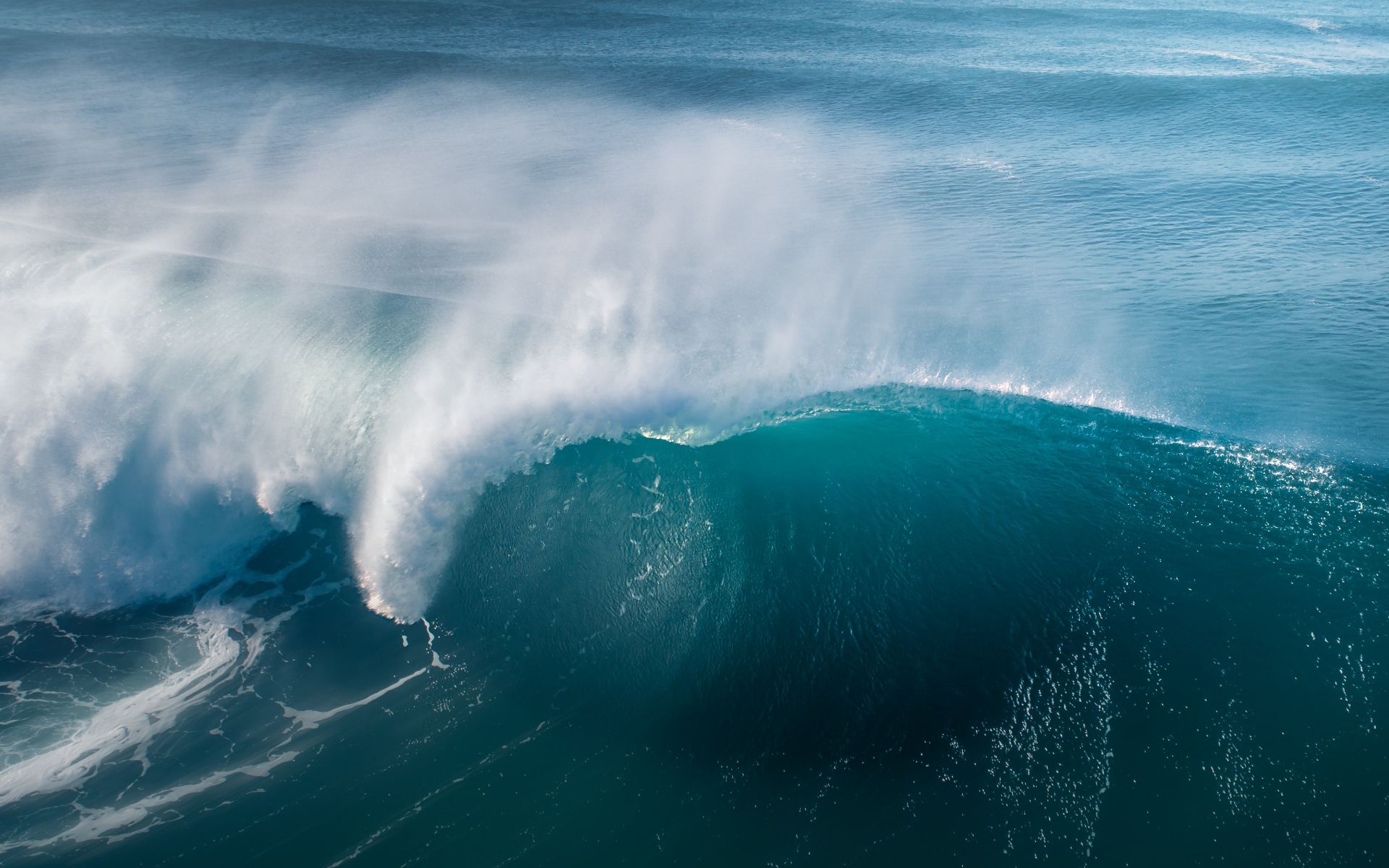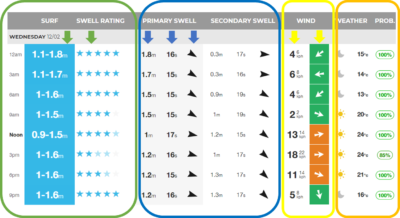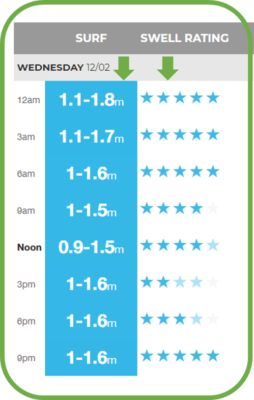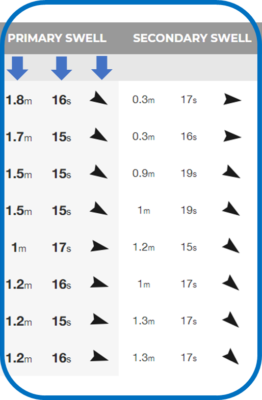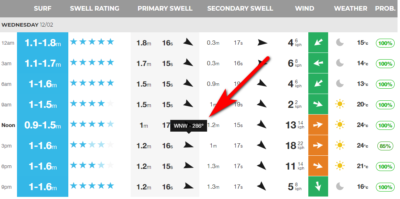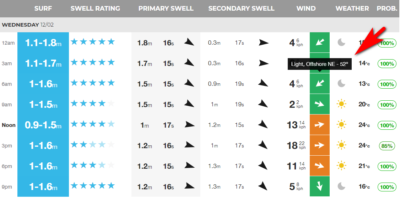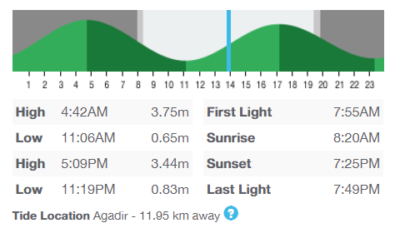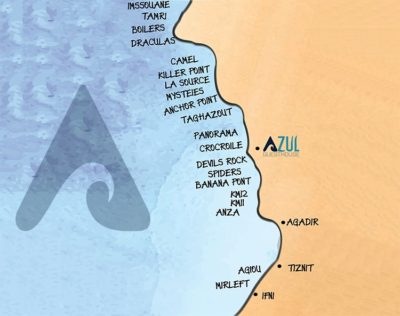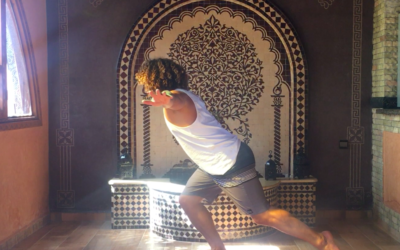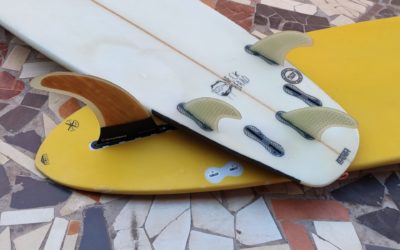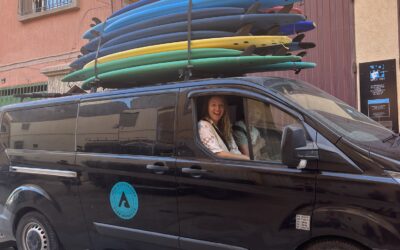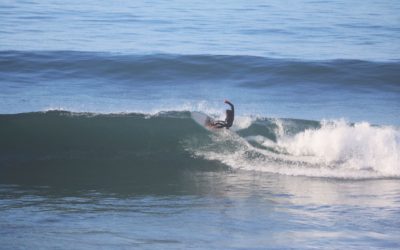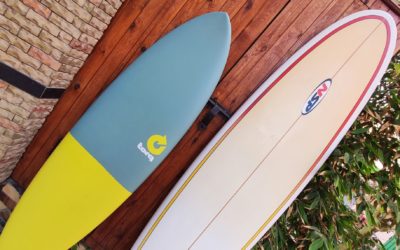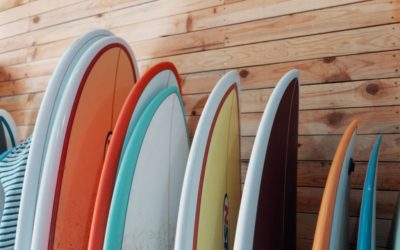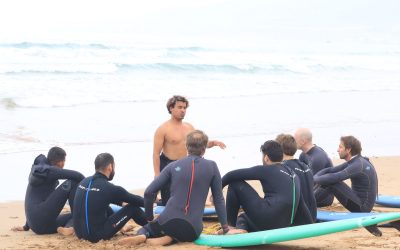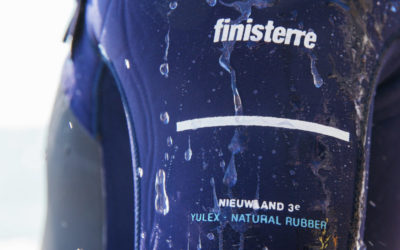You don’t know how to read surf reports? You are a bit lost with the surf words such as “period”, “offshore”, “onshore”… In this article, we will talk through the basics of how to read the reports so you can decide whether it is smart to go for your next surf trip !
The different report sites.
Surfline – it is known by the surfers as the best source of a information regarding the swell
WindGuru – used mostly by the Kitesurfers, it is the best source of information to check the wind forecasts (direction, strength…)
Surf Report – a site that is fueled by local surfers that gives info on the spots!
Understanding a report.
This is how a report look like! In this case, we are watching the report for Wednesday the 12th of February for one of our home spot – Devils Rock. It is extracted from Magic Sea Weed.
The report is broken down 4 parts:
- The green part (1): information on the waves’ size you will have
- The blue part (2): information on the swell quality
- The yellow part (3): wind information
- The orange part (4): the weather forecast
All these pieces of information will help you have an idea of how the waves will look like during the day. Especially, understanding the first 3 parts is essential to help you make a decision about when is the best time to go surfing.
- The green part. It shows the information on the waves’ size on the spot as well as an overall rating of the conditions. The greater the stars the better.
- The blue part. It shows two key information: the period of the waves and the direction of the primary swell. The size of the swell is an indicator of the size of the waves you will find on the spot.
- The yellow part. It shows two key information: the strength of the wind and its direction (offshore or onshore…)
What does offshore, onshore, period means?
A quick surf lexicon.
The period – it represents the time between two waves. You measured it in seconds.
- The lengthier the period, the more space between waves you will find. With a long period, you will have powerful and bigger waves. For example, a 0.7m swell with a 13s period can produce waves up to 1.4m!
- The shorter the period is, the more the waves be closer to each other. Usually, a short period will decrease the size and quality of waves.
A good rule of thumb for beginners and intermediate: a 10sec period is a minimum for a good session. At our home spot, Devil’s Rock, you need at least 11 sec period for the spot to work.
The swell direction
Each spots work differently depending of the swell direction. For example, for our region, the best swell is the NW swell.
At the moment of writing, the direction of the primary swell is West. The best swell for Devil’s Rock to work is normally NW. The swell direction can change during the day: for example today, this afternoon it will be West North West, so the spot should work!
The wind direction.
The wind direction is as important as the swell direction.
If the wind come from the sea, we call it an ONSHORE wind. An onshore wind will flatten the waves and make the spot messy.
If the wind come from the land, we call it an OFFSHORE wind. It will make the wave more shallows and the spot will get very clean.
To know how the wind will be, simply check the report (hover your mouse over the wind direction.)
The tide.
A full surf report will also have indications on the tide. Some spots can work at low tide or high tide only. Some at every tide. Others can also work only at mid-tide. So the best is to do some research on the spot beforehand.
A run-through of our spots
As we said many times during this article, the best to know if you should go surfing is to have tips from the locals. Check out our website to have a quick outlook of our spots!
A quick checklist before making the decision to go surfing
- Are the waves big enough to surf?
- Is the period long enough to generate surfable waves?
- Is the swell orientation good for the spot?
- Is the wind offshore or onshore?
- When is the best time to go surfing based on the tides?

